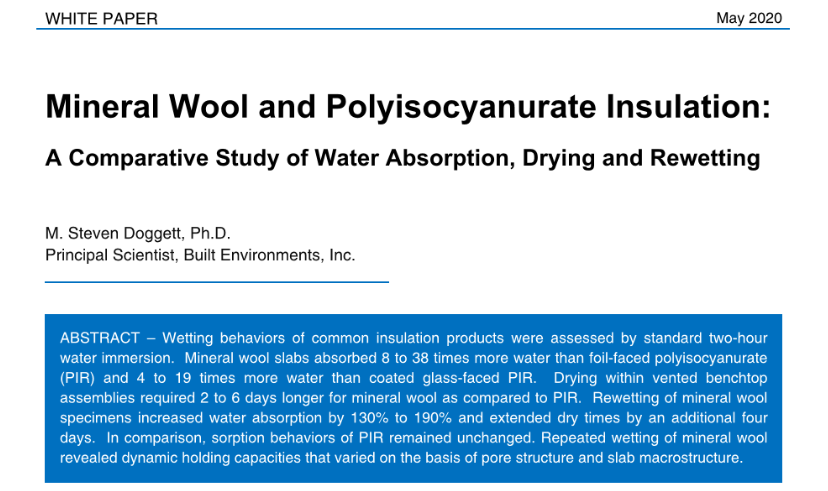Tags: #buildingdesign #buildingenclosures #buildingenvelopes #buildingmaterials #buildingproducts #buildingscience #insulation #materialsscience #mineralwool

ABSTRACT: Wetting behaviors of common insulation products were assessed by standard two-hour water immersion. Mineral wool slabs absorbed 8 to 38 times more water than foil-faced polyisocyanurate (PIR) and 4 to 19 times more water than coated glass-faced PIR. Drying within vented benchtop assemblies required 2 to 6 days longer for mineral wool as compared to PIR. Rewetting of mineral wool specimens increased water absorption by 130% to 190% and extended dry times by an additional four days. In comparison, sorption behaviors of PIR remained unchanged. Repeated wetting of mineral wool revealed dynamic holding capacities that varied on the basis of pore structure and slab macrostructure.
Key Takeaways:
1) Sorption values for mineral wool are orders of magnitude greater than those derived from standard methods where high humidity, not liquid water, is used as the wetting medium (i.e. ASTM C1104). A further two-fold increase in absorption is observed when mineral wool is rewetted.
2) Claims regarding water repellency and matrix drainage must be balanced against the fundamental realities of pore structure. While mineral wool products do possess a certain degree of water repellency, this resistance is readily breached by factors such as low external pressures, changes in surface energies, and water immersion. Claims regarding matrix drainage imply partial saturation where water transport is determined by gravity and facilitated by displacement from water in upstream voids. Appreciable release of bulk water does not occur after this initial drain period as evidenced here by high holding capacities. The lower portion of such wetted slabs will remain partially saturated for several days.